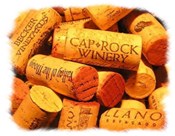
|
that plug of bark! ......is the Cork Age over?
By: Thomas M. Ciesla |
|
| |
|
|
Wine has a love-hate relationship with oxygen. During the winemaking process, oxygen is the devil for a vintner. Too large a surface area exposed to oxygen inside of a barrel will ruin the wine. That's why vintners are constantly “topping off” barrels during fermentation to keep the amount of wine exposed to oxygen as small as possible. For the consumer, however, oxygen is the wines friend – at least temporarily. We've all heard about opening a bottle of wine in advance to “breath”, or swirling a glass of wine to allow oxygen to mix with it and release a good “nose”. Once the wine is exposed to the atmosphere, however, things begin to go down hill in a hurry. Oxygen once again becomes the wine's enemy.
So the concept of storing wine is simple: a durable container with a seal to keep oxygen out. For over 300 hundred years, the preferred gatekeeper against oxygen has been the cork stopper. Why? Well, quite simply, there was nothing better available. But, after three centuries, wine is once again being ruined in the bottle -- the age old problem of storing wine has returned.
CORKED WINES! You've probably heard the term somewhere along the line, even if you're not a devoted wine drinker. The term refers to a bottle of wine that has that musty, moldy taste. The culprit of corked wine is TCA (2,4,6-trichloroanisole), a fungus that's found in cork. No one knows for sure how cork becomes contaminated with TCA, but cork-processing techniques are the likely source. Estimates of “corked” wines range from 5-10 % of all wine production. Now, this may not seem like that much, but when you consider that collectively we produce around 17 billion bottles of wine each year, even the low-end estimate represents a substantial loss of product. Corked wines occur at a rate that would not be tolerated by any other industry. The effects of TCA tainting range from the modest levels where the wine is robbed of fruit flavors, to high levels that impart a wet newspaper odor, making a wine quite undrinkable. So if cork fungus has been around as long as cork, why all the fuss within the last few decades? According to some winemakers, it's the recent advancements made in winemaking. As modern improvements have made wine better, even small amounts of TCA tainting become readily apparent. Ironically, while winemaking has dramatically improved, cork production has remained basically the same for the last 300 years. Frustrated with cork producer's inability to solve the TCA problem, winemakers looking for alternatives began experimenting with synthetic corks. These offered a TCA-free solution and currently make up around 9% of wine closures used in the industry. Though less expensive than natural cork, synthetic corks are not without problems: they resist some types of wine openers, and are often difficult to extract, or spin freely with every turn of the corkscrew. Winemakers quickly realized that synthetic corks were not the final solution to the perfect bottle closure.
|

